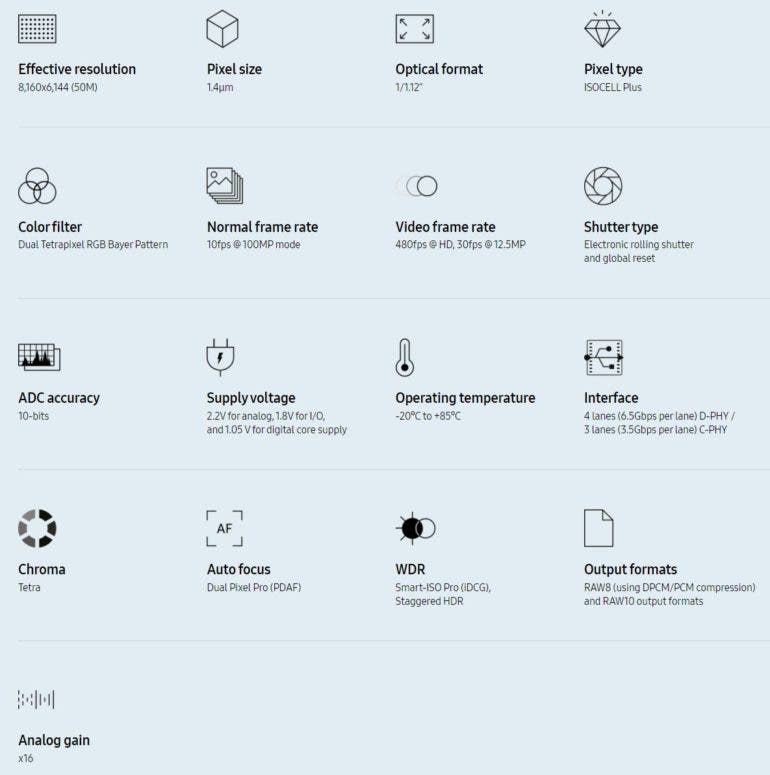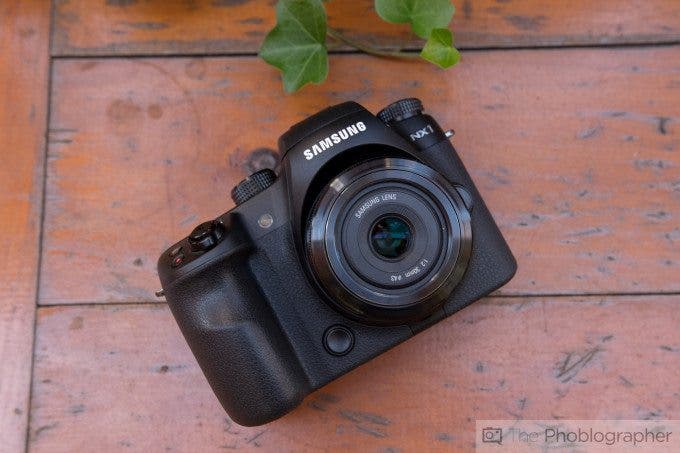It’s Time for Samsung to Make Traditional Camera Sensors Again
Samsung is continuing to innovate in the mobile space, and the likes of Canon and Co. should be taking note.
Back when Samsung was making traditional cameras, they were well ahead of the game. Unfortunately, few people really took Samsung seriously. Even though Samsung’s cameras were superior when it came to tech, they faded away. After exiting the traditional camera space, Samsung really started innovating in the mobile world. Now, Samsung’s new ISOCELL GN2 sensor will power their latest smartphone cameras, and boy could other manufacturers learn a thing or two. After the break, we’ll discuss the new Samsung sensor. We’ll also share our thought’s on why we think Samsung needs to scale their mobile sensor tech up to traditional cameras.
A recent article on Image Sensors World discusses the new Samsung ISOCELL GN2. The ISOCELL GN2 is a brand new 50 Megapixel sensor that’s designed for smartphones. This is not just another sensor, though. This one has a few tricks up its sleeve. The ISOCELL GN2 features a brand new autofocusing system call Dual Pixel Pro. Samsung states that this is their most advanced autofocus system to date. This PDAF system employs 100 million phase detect diodes, which results in ultra-fast focusing. All of the pixels are also split diagonally and not just vertically. This allows the sensor to recognize the top and bottom of the frame, which means faster focusing. Besides that, low light focusing is rapid, thanks to every pixel working as a focusing agent. Samsung is doing some pretty incredible stuff here.
But Wait, There’s More

We’ve already talked about Samsung’s new Smart ISO Pro feature, which allows this new sensor to change the conversion gain (voltage output) to the sensor rapidly. This allows the sensor to quickly create high dynamic range images without any input from the user. Then there’s the new staggered HDR feature. The ISOCELL GN2 uses rolling shutters to capture short, middle, and long exposures. This makes the sensor very efficient and will help save battery life compared to old HDR systems. We all know Mirrorless cameras can use all the help they can get in the battery life department.

As you can see from all of the features above, Samsung is really going to town with its sensor technology. I haven’t even mentioned the 100 Megapixel mode where the sensor captures individual layers of red, green, and blue pixels and merges them together. Now, just imagine if Samsung still created sensors for traditional cameras.
Sony, Canon, and Co. Could Learn from Samsung

If Samsung decided to jump back into the traditional camera game, some boots would start shaking. Sony has been innovating again in terms of sensors. The new 50.1 Megapixel sensor in the Sony a1 is a marvel and has moved a stagnant technology forward. Canon’s new sensors in the EOS R5 and R6 are also good, but how long did it take them to get there? Far too long.

In a short space of time, Samsung has been able to revolutionize mobile sensor technology. They have made smartphone cameras, in general, good enough for just about everyone. Just imagine if Samsung can scale up their sensor technology to APS-C and Full Frame cameras. It would certainly make other sensor vendors take notice. I’m not saying Samsung should start making cameras again, but I would like to see them bring this technology to modern cameras. It would certainly shake things up, and we won’t have another situation where every camera is using the same sensor. If Samsung doesn’t do it, when will Sony, Canon, or TowerJazz do it? What do you think about the new mobile sensor technology from Samsung? Let us know in the comment section below.